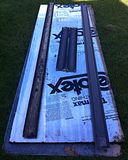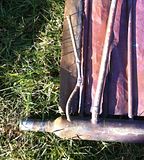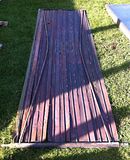Educational post for those with some of these Canadian made panels.
Photos of the guts of the system. Note heat plate tubes are isolated (I'm not asking) from main trhough pipe flow. Plate tubing contains a volatile fluid to transfer heat to through piping.
An old tube was cut and drained and fluid was not flammable, but smell was not far from acetone.
These old panels can pass a pressure test, but heat tubing may have failed to atmosphere, leaving heat collection a fraction of a output.
Pictures are clickable thumbnails for larger version.

The frames, insulation and backing

The bottom back of plate tubing

main manifold jacketing, and plate tubing fill pipe from back of plates

Back of plate

Now you know.
Photos of the guts of the system. Note heat plate tubes are isolated (I'm not asking) from main trhough pipe flow. Plate tubing contains a volatile fluid to transfer heat to through piping.
An old tube was cut and drained and fluid was not flammable, but smell was not far from acetone.
These old panels can pass a pressure test, but heat tubing may have failed to atmosphere, leaving heat collection a fraction of a output.
Pictures are clickable thumbnails for larger version.

The frames, insulation and backing

The bottom back of plate tubing

main manifold jacketing, and plate tubing fill pipe from back of plates

Back of plate

Now you know.

Comment